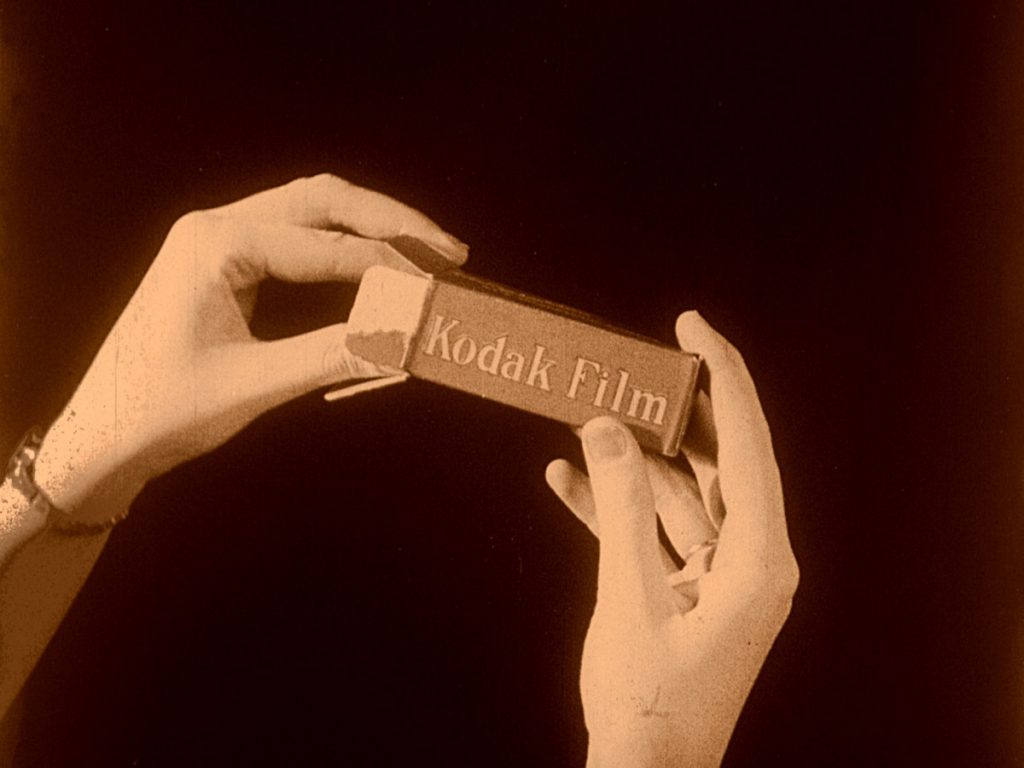Patrick Holzapfel
– Otto Nelson of the National Cash Register Company, and Vice-President of the Screen Advertisers Association started the project of 30 Years of Motion Pictures as a film presentation. It was presented at the 10th Annual Society of Motion Picture Engineers Conference in Washington, DC in May 1926 and Screen Advertisers Association’s convention in Dayton, Ohio in October 1925. (Jared Case who was in charge of the restoration collected this information about the screening history of the film)
– The motivation to show the merits of the American motion picture industry is clearly visible. The film which arrived at the George Eastman House in 9 nitrate reels in the 1950s only received some European input when Terry Ramsaye, writer of the comprehensive book A History of the Motion Picture through 1925 updated it. Nevertheless it is still clearly centered on US-production.
– Ramsey had quite a life with the movies. He produced some of Charlie Chaplin’s early comedies. He worked on newsreels as an editor and also for Pathé. Later in his life he became editor of trade paper Motion Picture Herald. It is fascinating how many stories like this wait to be discovered in such a compilation film.
– “If from the dark depths of the forest you transplant a stunted, struggling little tree, dwarfed and light-starved, out into a favorable soil and a place in the sun, its pent energies and deep primeval powers will shoot it into an amazingly rapid growth, a fevered redemption of the lost years. It is also so with the motion picture.“ (from A History of the Motion Picture through 1925, Terry Ramsaye)

– A definition of cinema as a means of capturing milestones in the progress of the world…
– Images of early Kelleycolor invented by William van Doren Kelley and Max Handschiegl in 1926 are breathtakingly beautiful. We can see a bowl of fruit turning from monochrome into the brightest flavours of green and red, a blue winged butterfly turning from light to shadow and back again as well as a red sky looming over what could be the prairie John Ford was visiting with a camera for the first times during the same years.
– A remarkable intertitle introducing Chaplin labels him a “philosopher of pessimism“.
– It is amazing to see images in movement. That may seem a rather dull statement but when after about two thirds into the movie a more or less chronological montage sequence of historical newsreel footage begins, the power and relevance of the moving image becomes ever so visible.
– A portrait shot of Hugo Riesenfeld can be seen. The Vienna-born composer is regarded as one of the most important film composers of the silent era, creating scores for F.W: Murnau’s Sunrise and Tabu, D.W. Griffiths Abraham Lincoln or Cecil B. DeMille’s The Ten Commandments. Riesenfeld also composed a score for 30 Years of Motion Pictures which was performed by the New York Symphony Orchestra at Carnegie Hall.
– The Film Museum’s curator Jurij Meden repeatedly labelled the film as a sort of Histoire(s) du cinéma done in 1927. Especially compared to Film and Reality by Cavalcanti and Lindgren, also shown during the retrospective, associative rhythms based on montage reminiscent of Godard’s seminal compilation work are detectable. Cutting from images of a Harold Lloyd comedy to newsreel images of World War I seems like something Godard could also have done. Still the approach of Cavalcanti and Lindgren feels more subjective and thus closer to Godard. Their quest to bring order to certain forms of cinema is a genuinely personal one whereas the meandering edit of 30 Years of Motion Pictures is made to impress.
– A huge difference to Godard is that 30 Years of Motion Pictures is full of enthusiasm and ideas about a medium made for the future. Being presented by the end of the 1920s the film also marks something like a conclusion of the silent era.
– In a sequence about the filming of airplanes in motion the cinematic importance of capturing velocity is highlighted. Observing how much care is devoted to the technical progress of cameras in order for them to be able to record a world getting faster and faster, it once again becomes apparent why cinema might not be as relevant today as back in the 1920s. It is too slow. However, this might be the exact reason it is even more relevant today.
– Slowly, it becomes rather apparent that many archives present very rare films at the retrospective. I wonder if these secrets and analogue myths of film history do really represent their work/institutions and the work of FIAF best.
More on Forever Film
Notes on Grauzone (1979, Fredi M. Murer)
Notes on Film and Reality (1942, Alberto Cavalcanti and Ernest Lindgren)
Notes on Yadanabon (1953, Tin Maung)
Notes on White Shadows in the South Seas (1928, W.S. Van Dyke, Robert J. Flaherty)